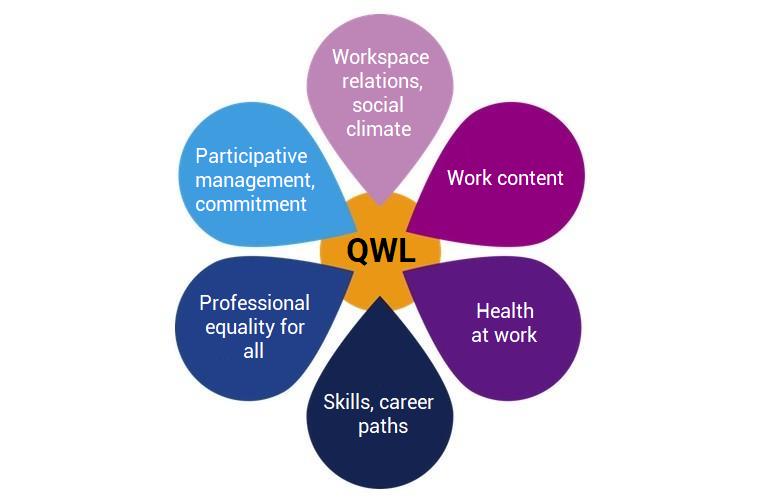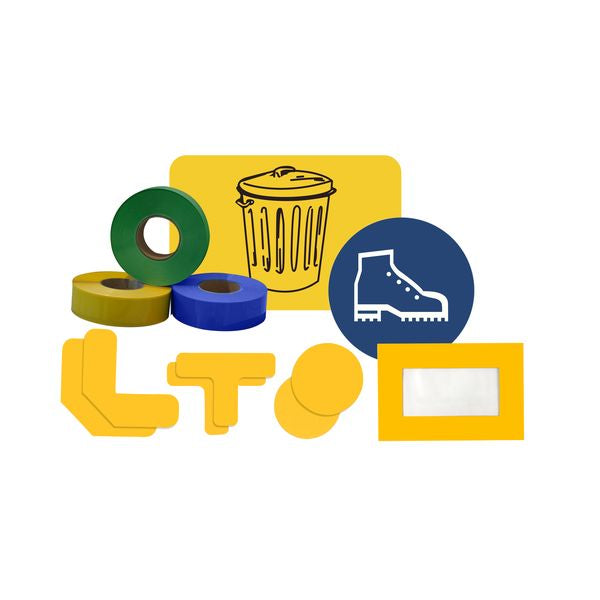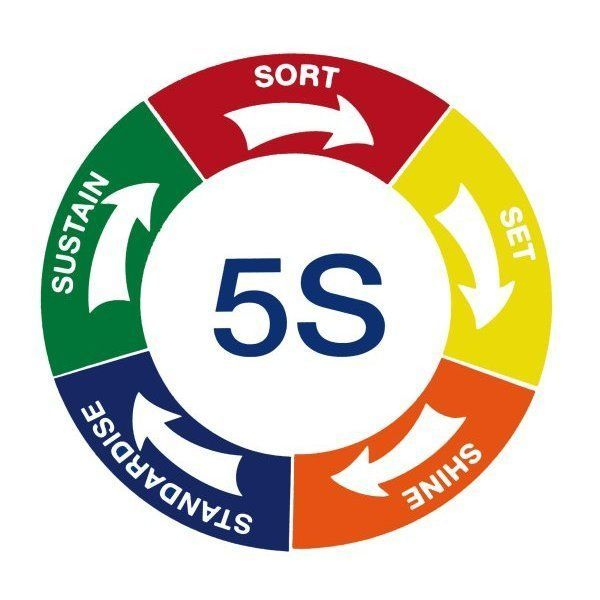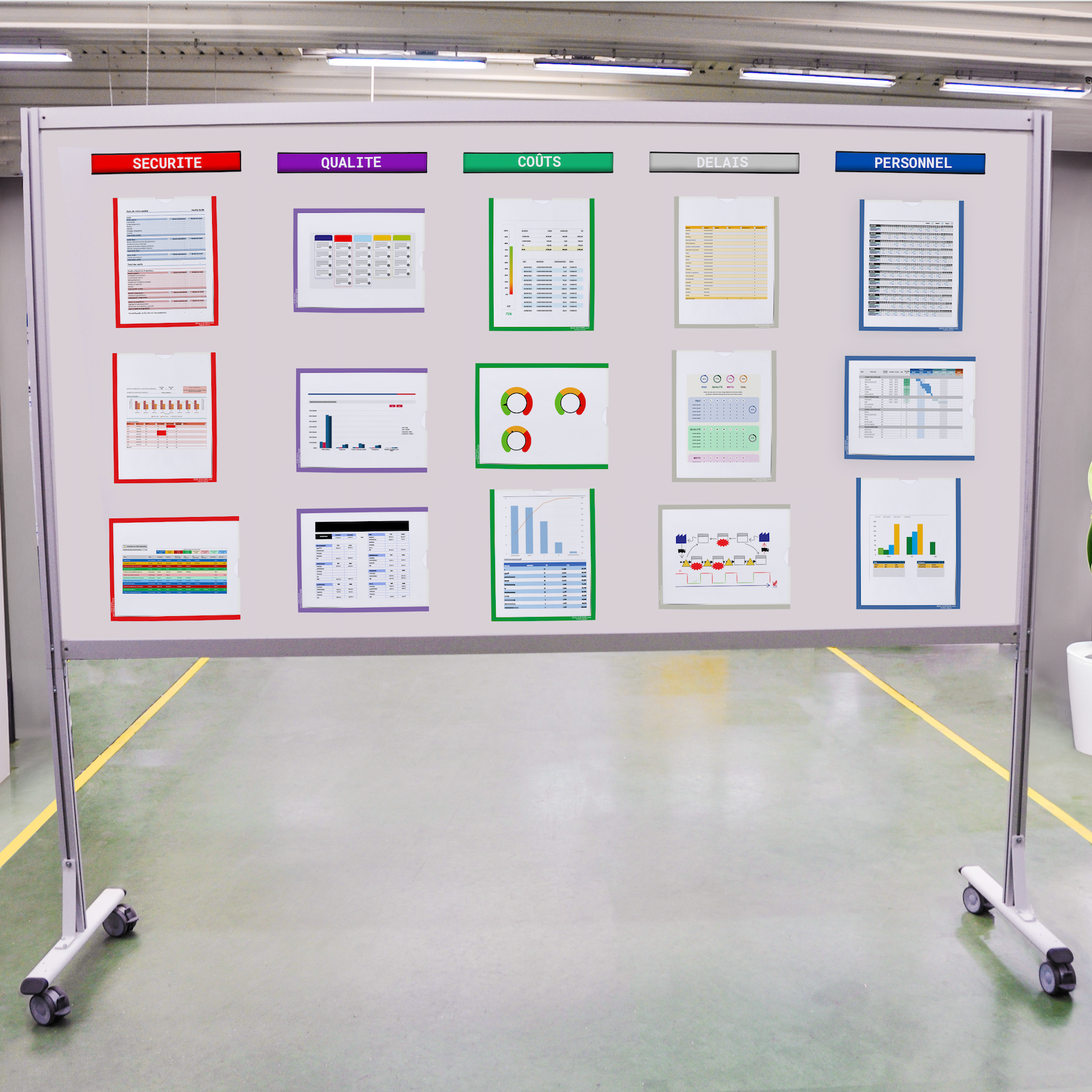Quality of life at work (QWL) refers to the improvement of working conditions for employees and the overall performance of companies.

Definition of QWL
QWL can be seen as a feeling of well-being at work, encompassing several environments :
- The atmosphere
- The company's culture
- The interest of work
- Working conditions
- The feeling of involvement
- Degree of autonomy and accountability
- Equality
- A right to error granted to everyone
- Recognition and appreciation of the work done
QWL is an approach and not a theme, the quality of life at work is a way of building and conducting collective action that makes it possible to articulate the objectives of improving working conditions and those of quality of service. To improve the quality of service, it is necessary to set up a dashboard system to inform employees about the company's situation. It is a framework for action that makes it possible to engage on specific themes such as management, the prevention of psychosocial risks (PSR), the management of absenteeism or the conduct of an organizational or reorganization project. This approach can encourage companies to set up a Visual Management of teams.
It is an approach that is based on experimentation and continuous improvement. Carrying out a QWL approach means conducting each project by involving agents, organizing exchanges between all stakeholders and taking into account the work situation of each. Setting up an approach such as quality of life at work means experimenting, implementing innovation projects resulting from a concerted choice with all employees who will be impacted by the actions that will be carried out. The notion of error is to be taken into account when embarking on an approach like this.
Quality of life at work involves other concepts such as well-being at work. This concept places more emphasis on the subjective dimension, i.e. everyone's perception of their working conditions and experience. We generally retain 3 dimensions of happiness at work:
- Satisfaction, the cognitive dimension.
- Pleasure, which corresponds to the emotional dimension, is the feeling in relation to a lived experience and the resulting feelings.
- Self-realization appeals to the eudemonic dimension, which can correspond to the meaning that one puts into one's work or to the feeling of control over one's life.
QWL also involves psychosocial risks (PSR).
What are PSRs?
These are the risks to mental, physical and social health, caused by employment conditions and organizational and relational factors that potentially interact with the mind.
We can mainly highlight 6 risk factors:
- Intensity and workint time
- Emotional demands
- Lack of autonomy
- Degraded social relations at work
- Conflicts of value
- The insecurity of the work situation
Over the past 10 years, there has been a semantic shift in favour of the notion of QWL, which is less focused on risk factors alone.
Why launch a QWL approach?
First of all it makes it possible to meet the need for meaning at work, the QWL approach is based on the search for improvement in work processes with the objective of better serving the public. Bringing the objectives of improving working conditions and improving services to an equal footing are assets to reinforce this need for meaning in work.
This approach makes it possible to promote employee engagement within the company. This encourages the establishment of expression mechanisms for workers, which allows them to express themselves freely on working conditions...
Preventing occupational risks and promoting occupational health is done by continuing and deepening the PRS procedures. This makes it possible to do prevention.
Support the transformations of organizations. The QWL approach offers the opportunity to involve employees in transformations and to take into account the real working conditions of employees.
Promote a better reconciliation of time, a better articulation of the different times of the employees' lives, that is to say the professional and personal life.
Objective of the QWL approach?
First of all, the quality of life at work approach was created to continue the work started by PSR by not focusing solely on the different risks.
The main goal is to improve the working environment of employees by making them agents of change.
Three main objectives can be identified through the QWL approach:
- Recognize and support the quality of commitment to work
- Strengthening the coherence of responses to social challenges
- Driving performance differently
What are the advantages of a QWL approach?
- Creates a strong corporate culture
- It leads to a decrease in absenteeism and accidents at work
- Lowers company turnover
- It improves productivity
- Attracts new talent
How to succeed in your QWL approach ?
Initially, to succeed in its QWL approach, employees must be actors and not spectators. Indeed, their feedback is important in order to improve working conditions.
The 5 main steps to succeed in your quality of life at work approach :
- Take the approach to the highest level, throughout the project
- Collectively take ownership of the quality of life at work approach
- Identify contingencies that may modify the project
- Revisit management and management practices
- Establish a social dialogue
In order to carry out an effective QWL approach, it is necessary, for example, to adapt the equipment according to the claims that have been made by the employees. Ergonomic problems can impact the QWL approach. Enter a dynamic of continuous improvement with the PDCA (Plan Do Check Act) solution.
Game training is a good way to inform employees about the different practices put in place. This allows you to learn while having fun, this form of learning encourages the implementation of social dialogue. The Kaizen training game is adapted to a QWL approach because it allows you to see all aspects of continuous improvement.
Discover our range of creativity space, a creativity space within a company allows employees to find ideas or think about different topics as a team. Discover our range of ergonomic and sit-stand seats to make life easier for employees in the workshop, SESA SYSTEMS also offers comfort (ergonomic) office chairs.




